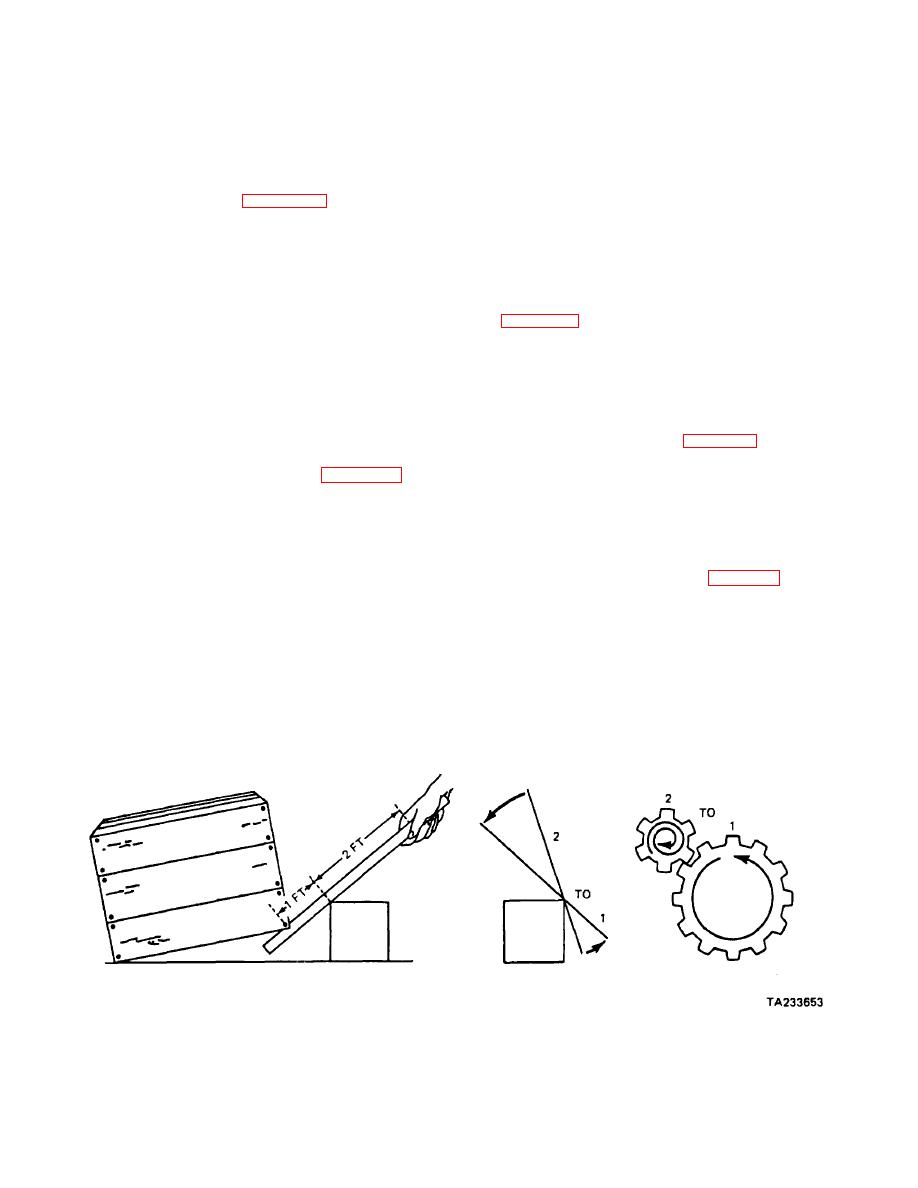
| Tweet |

Custom Search
|
|

|
||
 TM 9-8000
torque increase (or torque multiplication) may be much
transmitted through the system. If a large resistance
greater than 12:1.
must be overcome, the torque multiplication also must be
high. If this factor is not correct, the driving system can
b. Mechanical Advantage. The use of a lever to
be overloaded. On the other hand, if a small resistance
is to be overcome, the driving system might not be used
move heavy objects is well known. When a box is too
to its fullest capabilities, therefore producing an inefficient
heavy to be lifted by hand, a crowbar or lever can be
system.
used to lift it, as shown in figure 19-3. With the lever
placed as shown, only half as much force is required on
e. Internal and External Gears. Gears are basically
the lever to raise the box. Suppose that a lifting force of
of two types: internal and external. Internal gears are
200 pounds is required to raise the end of the box. With
shaped cylindrically with teeth machined on the inside.
the lever arranged as shown, only a 100-pound
External gears usually are circular with teeth around the
downward push is needed on the lever. The farther out
outside of the gear. An example of both gears is shown
on the lever the hand is put (away from the pivoting point,
in figure 19-4.
or fulcrum), the less downward push is required. But
also, the farther the hand must move to raise the box.
The mechanical advantage of the lever is the ratio
19-4. Types of Gears. There are many types and
between the two distances from the fulcrum. In the
designs of gears and gear systems. Some of the most
example shown, the mechanical advantage is 2:1.
popular gears found in the automotive vehicle are
discussed below.
c. Mechanical Advantage in Gears. A rough
comparison between mechanical advantage in levers
a. Spur. Spur gears (fig. 19-5) are the most
and mechanical advantage in gears can be made. Such
common type of gear.
The teeth are machined
a comparison is shown at the bottom of figure 19-3. One
perpendicular to the axis of rotation. Because these
end of the lever moves twice as far as the other. When
gears mesh only one tooth at a time, they are not
two gears are meshed and one gear has twice as many
capable of absorbing great amounts of torque. They
teeth as the other, the smaller gear will rotate twice for
generally are noisy during operation and are used to
each revolution of the larger gear. In other words, the
change direction and/or speed.
mechanical advantage between the two gears would be
1:2 when the larger gear drove the smaller gear. If the
b. Helical. Helical gears (fig. 19-5) have teeth
smaller gear drove the larger gear, the mechanical
machined at an angle to their centerline of rotation. This
advantage would be 2:1 because the smaller gear would
characteristic enables the gear to engage more than one
have to exert half the force for twice the distance.
tooth at a time. This type of gear, therefore, is stronger
and able to transmit more torque than spur gears.
d.
Mechanical Efficiency.
The mechanical
Because of the angle cut of the gear, two meshing gears
efficiency of a system is dependent upon gear ratios and
tend to move apart during use. This reaction therefore
the amount of power that must be
requires the use of a thrust washer or tapered bearing
when using helical gears. Helical gears
Figure 19-3. Mechanical Advantage.
19-4
|
||
 |
||